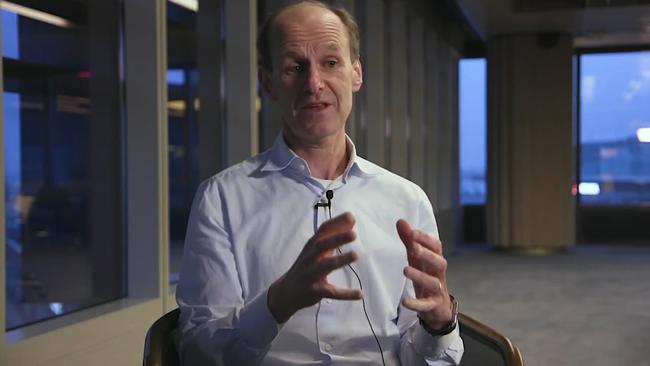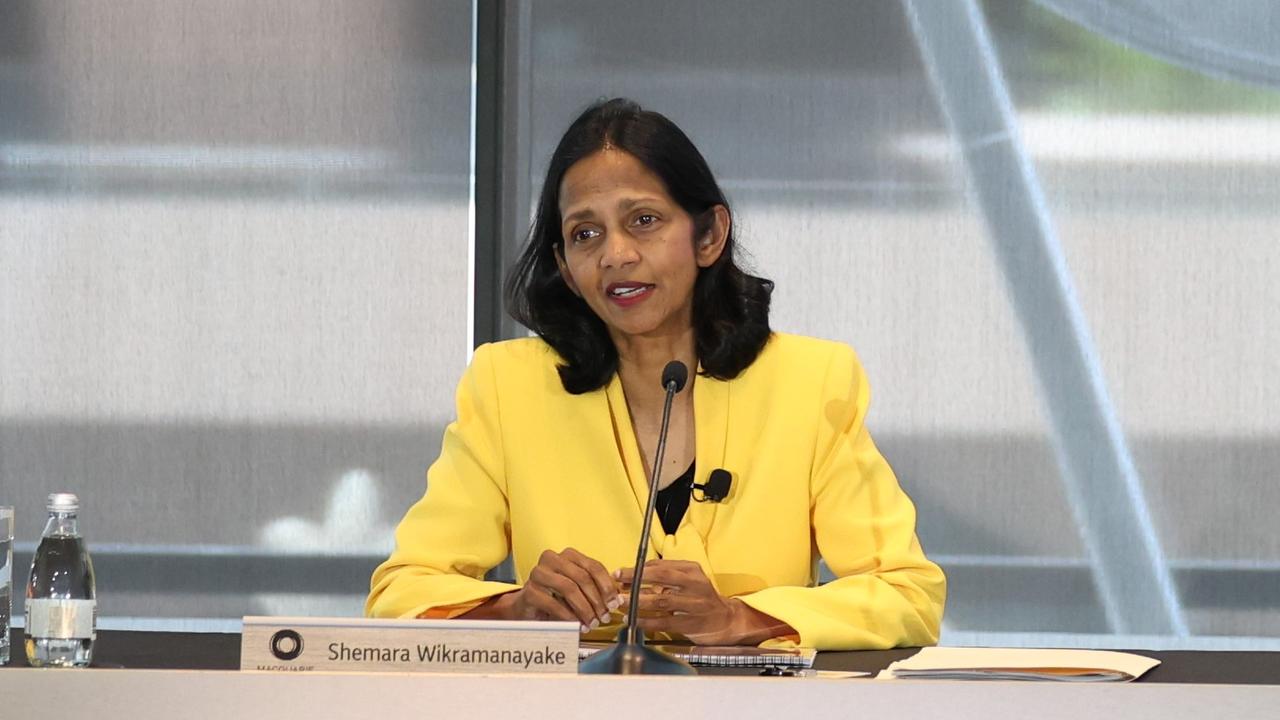Compare the pair: ANZ vs Westpac in cost-cut race

At ANZ’s half-year result on Wednesday, chief executive Shayne Elliott will unveil his pathway to an $8bn annual cost base — an objective he formally put on the table two years ago.
The market will then have the opportunity to compare the pair after Westpac CEO Peter King chiselled an $8bn cost base in stone, down more than $2bn by the 2024 financial year from its current level of $10.2bn.
There’s long history of underachieved cost targets in banking.
Westpac chief financial officer Michael Rowland, the architect of the plan and from all reports a no-nonsense kind of banker, demonstrated his seriousness, if there was any doubt.
“I personally have responsibility for the program — we will get it done,” he emphatically told analysts on a call.
The key difference ahead of Elliott’s rejoinder is that ANZ can at least boast of a track record in cost reduction; in fact, history shows that the bank has cut costs in absolute terms every six months since the first half of 2016.
Westpac, on the other hand, is at the starter’s gate.
It’s hard to disagree with the assessment of veteran bank analyst Brian Johnson of Jefferies.
“ANZ has done a good job on costs and Westpac hasn’t, which means more execution risk for Westpac,” he says.
The risk for Westpac is that much greater because a slide in Monday’s investor pack shows a group net promoter score which trails its big-four rivals and subsidiary St George Bank.
On the likelihood of a customer recommending Westpac to a friend or colleague, the bank measures up at negative 7.3 points compared to negative 0.8, positive 1.1 and 3.1 for the three other majors. St George sits at positive 1.9.
King and Rowland will be pushing for the Holy Grail of happier customers from cheaper, more streamlined digital processes, but few legacy companies have managed to pull off the challenge of building market share while hacking into costs.
Remember, past problems with its offshore mortgage processing operation means that Westpac has lost almost 150 basis points of home lending market share.
Also, it’s not as though we haven’t been here before.
Under previous management in 2016, Westpac targeted a cost-to-income ratio below 40 per cent.
It’s now at 51 per cent, which makes the compounding, percentage cost-cuts proposed by Westpac more significant than anything achieved in Australian banking in 40 years, on Goldman Sachs numbers.
ANZ is more advanced than Westpac in its simplification strategy, having slashed its cost base to $8.6bn in 2020.
When Elliott was probed last October on when the magical $8bn target would be breached, he said it was more a matter of 2023 than 2022, as he wanted to ensure ANZ remained competitive against emerging competitive threats.
Even so, hyper-growth in digital transactions continues to drive a contraction in the branch network, just as it will with Westpac.
For the Sydney-based bank, about $750m will come from divested non-core businesses, and a continuing digital revolution which will result in full automation of mortgages, up from 62 per cent.
The number of branch transactions will collapse by 40 per cent, the percentage of digital customer sales will increase from 41 to 70 per cent, products for sale will be more than halved to 345, and offshore locations will decline from eight to four.
Finally, Rowland will oversee $200m in spending cuts on third parties and contractors, and 20 per cent shrinkage in head office and corporate space.
They’re big numbers but they need to be to get to $2bn-plus.
NAB ‘greenwashing’
National Australia Bank has done a favour to climate activist group Market Forces by dressing up its $515m debt deal with the Port of Newcastle as a sustainability-linked loan.
Market Forces executive director Julien Vincent says the deal displays such an “astounding level of greenwashing” that it will be used to raise funds for a campaign against NAB, including newspaper advertising.
“I’d actually prefer it if a bank was upfront and said we don’t care about climate change, rather than engaging in some kind of grotesque dance by financing one of our biggest contributors to climate change,” Vincent says.
NAB says the loan is green because there’s a lower margin on offer if the port hits a range of social and environmental targets.
The bank says it is supporting customers in an orderly transition to net zero emissions, and is mobilising to achieve net zero financing emissions itself by 2050.
“Our customers are working towards lower emissions and we’ll work with them on their diversification planning,” a spokeswoman says.
Vincent’s argument is that Newcastle is the world’s biggest coal port and its throughput is overwhelmingly thermal coal, from which NAB has said it wants a complete exit by 2030.
Yet the sustainability targets in the Port of Newcastle deal are only linked to scope 1 and 2 direct and indirect emissions, not the scope 3 emissions from extracting the coal.
The NAB loan, he says, is effectively a “business as usual” deal, because the penalty for any failure to meet the sustainability targets is a slightly higher interest rate.
There was no recognition of the need for a “rapid transition to other lines of business”.
gluyasr@theaustralian.com.au
Twitter: @Gluyasr






It’s cost reduction at 20 paces, or the banking industry version of industry super’s “compare the pair” campaign, if you prefer.